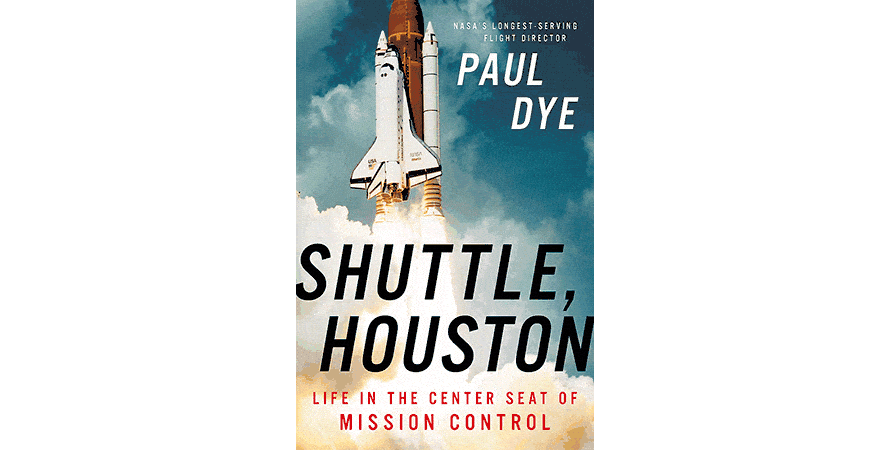Category: Nonfiction
Reviewed by: Casey Suire
Title: Shuttle, Houston: My Life in the Center Seat of Mission Control
Author: Paul Dye
NSS Amazon link for this book
Format: Hardcover/Kindle
Pages: 320 pages
Publisher: Hachette Books
Date: July, 2020
Retail price: $28.00/$13.99
ISBN: 978-0316454575
Over the years, there have been many ways someone could learn about NASA’s legendary Mission Control. A few documentaries have been made on both Apollo and Shuttle flight operations. Many space movies, most notably Apollo 13, have depicted life in Mission Control. Furthermore, numerous books, some authored by actual NASA Flight Directors, have been published.
One such book is Shuttle, Houston: My Life in the Center Seat of Mission Control by Paul Dye. Mr. Dye, the longest serving Flight Director in NASA history, gives a solid account of his long career in human spaceflight. Richly detailed with the author’s own experiences and recollections, Shuttle, Houston covers virtually every aspect of Mission Control. By the time you finish reading this book, you will feel like you just participated in an actual space mission.
Initially interested in a career designing and building aircraft, Dye studied aeronautical engineering at the University of Minnesota. After the aircraft company he was interested in went bankrupt, Dye left home and joined NASA’s Johnson Space Center in 1980. After several years of working various positions, he applied to be a Flight Director. While not accepted at first, Dye was part of the 1993 class of new Flight Directors. He would select “Iron Flight” as his call sign—a reference to the iron mines in his native Minnesota.
Dye goes into great detail telling his story. There is no doubt that he loves the Space Shuttle. One of the longest chapters is devoted to explaining how it worked. Topics like orbital mechanics and aerodynamics are explained. Dye also describes the immense amount of preparation and training required for each mission.
Like many things related to NASA, the book uses plenty of acronyms. One example is flight controller job titles. What the heck does a FDO or EECOM do? How about a CAPCOM, FAO, GNC, INCO, MMACS, etc.?
For fans of space exploration, the technical jargon will sound like music to the ears. For readers unfamiliar with spaceflight, this might seem like learning a new language. Fortunately, Dye is a great writer and has written a balanced book. Although Shuttle, Houston is very technically oriented, Dye explains concepts in a way that is easy to understand.
Some stories in the book involve the politics of Russian/American space cooperation at the beginning of the International Space Station (ISS) program. America’s former Cold War foe was brought in as a station partner so that Russian scientists and engineers wouldn’t sell their services to nations that wanted missiles and nuclear weapons.
Other moments are lighthearted and humorous. For example, during a mission coinciding with the 40th anniversary of Apollo 11, Iron Flight instructed a flight dynamics officer (FDO) to figure out how much propellant would be required to send the Space Shuttle on a trajectory to the Moon. Interestingly enough, the numbers for such a maneuver were actually calculated. A warning note was added to this procedure in order to prevent it from actually being initiated!
Inevitably, the book will draw comparisons between Old Space and New Space. Dye himself gives a brief take on space commercialization. When this book was published, SpaceX was conducting the first crewed mission of the Crew Dragon spacecraft. Anyone who reads this book after watching SpaceX’s mission coverage will notice a lot of differences in the flight operations of the Space Shuttle versus the Crew Dragon. While the vehicles and procedures may be different, the leadership lessons Dye gives in the book should be followed by all Flight Directors and controllers regardless of whether they work for the government or a private group.
For those interested in Mission Control during the Space Shuttle years, Paul Dye’s well-written book on his impressive career is about as good a book as one can ask for. A very interesting read.
© 2021 Casey Suire
Please use the NSS Amazon Link for all your book and other purchases. It helps NSS and does not cost you a cent! Bookmark this link for ALL your Amazon shopping!



















